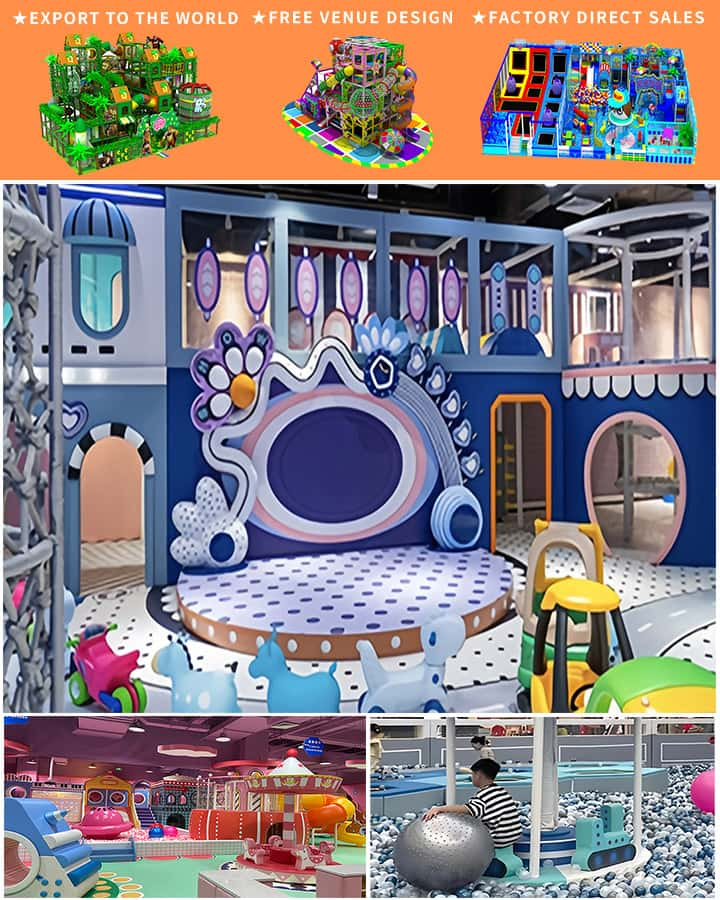Starting an indoor playground business is a venture that requires meticulous planning and a significant financial investment. Entrepreneurs interested in entering this dynamic industry must consider multiple factors when budgeting for their startup. From initial costs to ongoing expenses, understanding how much it costs to start an indoor playground is crucial for ensuring the success and profitability of your business.
Initial Costs
1. Location and Rent
Securing a suitable location is one of the most critical aspects of starting an indoor playground. The cost of rent can vary greatly depending on the city, size, and location within the community. Prime locations with high foot traffic are typically more expensive but offer greater visibility and accessibility, which are essential for attracting customers. Monthly rent can range from \(2,000 to \)10,000 or more, depending on the area.
2. Building and Safety Regulations
Compliance with local building codes and safety regulations is paramount. Renovations and adaptations may be necessary to meet these standards, adding to your initial costs. Factor in inspections, permits, and any modifications needed to ensure a safe environment for children. This can add another \(5,000 to \)20,000 to your startup expenses.
3. Equipment and Furniture
Purchasing high-quality, safe, and engaging play equipment is the backbone of your indoor playground. Depending on the scale and variety of attractions you wish to offer, this expense can range from \(20,000 to \)100,000. Items such as climbing structures, slides, ball pits, trampolines, and interactive games will make up the bulk of this investment.

4. Licensing and Insurance
A business license and appropriate insurance policies are non-negotiable necessities. Licensing fees vary by location but generally range from \(500 to \)2,000. Insurance premiums for comprehensive coverage, including liability and property damage, can run between \(1,000 and \)5,000 annually.
Ongoing Expenses
1. Staffing Costs
Employing reliable and friendly staff is essential for the smooth operation of your indoor playground. Salaries, benefits, and payroll taxes for employees should be included in your monthly budget. Depending on the size of your facility and workforce needs, labor costs can amount to \(3,000 to \)10,000 per month.
2. Utilities and Maintenance
Keeping the facility clean, safe, and functional involves regular maintenance and utility payments. These ongoing costs include electricity, water, heating, cooling, cleaning supplies, and periodic equipment repairs. Monthly utility and maintenance expenses typically fall between \(500 and \)2,000.
3. Marketing and Advertising
Promoting your indoor playground is crucial for attracting and retaining customers. Budget for marketing efforts such as website development, social media advertising, flyers, and partnerships with schools or community organizations. Allocating around \(500 to \)2,000 per month for marketing activities should help build brand awareness and drive customer engagement.
Total Investment
Summing up all these expenses, the total initial investment to start an indoor playground business can range anywhere from \(80,000 to over \)200,000. While this might seem substantial, careful planning, strategic budgeting, and diligent management can set the foundation for a profitable enterprise.
Financial Planning Tips
To mitigate financial risks and enhance the potential for success, consider these tips:
- Conduct Thorough Market Research: Understand your target audience, competition, and market demand.
- Create a Detailed Business Plan: Outline your vision, strategies, projected expenses, and revenue streams.
- Seek Professional Advice: Consult with financial advisors, accountants, and legal experts to navigate complex regulatory requirements and tax implications.
- Secure Funding: Explore various funding options like personal savings, loans, grants, or investors.
- Monitor Financial Performance: Track your finances closely to manage cash flow effectively and adjust strategies as needed.
Conclusion
Starting an indoor playground business involves significant initial and ongoing expenses. However, with meticulous planning, strategic investments, and efficient management, you can create a thriving business that provides joy and excitement to children while delivering strong returns on your investment. By understanding how much it costs to start an indoor playground, you are better prepared to embark on this rewarding venture with confidence and clarity.




